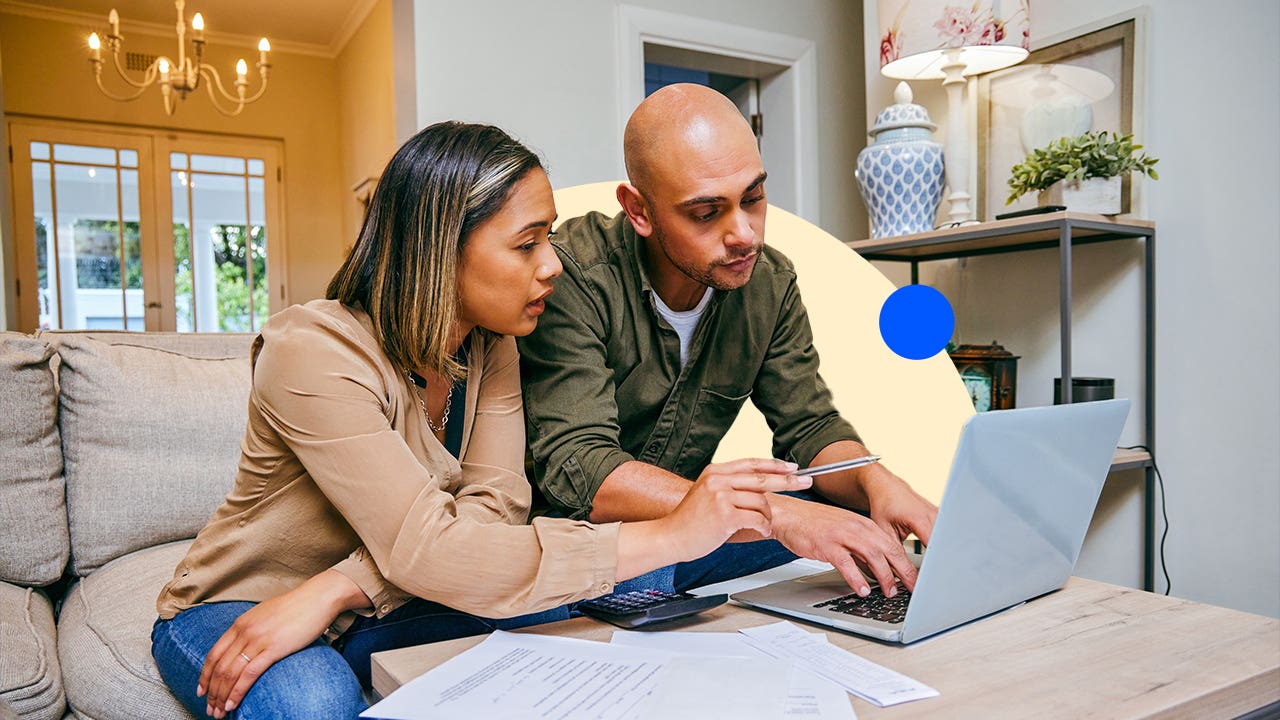Personal loan documents to gather before you apply

Key takeaways
- Most personal loan lenders require documents to prove your identity, income, bank account and address.
- Lenders collect information about your credit score, loan purpose and monthly expenses to determine your eligibility and loan terms.
- Gathering all necessary documents and information before you apply for a personal loan may help you get your funds faster.
When you apply for a personal loan, lenders request several documents to verify your personal and financial information before offering you a loan. Some lenders set unique application and eligibility requirements, but most will ask for similar paperwork.
Knowing which documents you need and having them ready before you apply may increase your chances for approval so you receive your funds more quickly.
1. Application form
All lenders require you to fill out an application form to be approved for a loan. If you’re borrowing from an online lender, the process is done entirely online. If you apply for a personal loan with your local bank or credit union, you may be able to fill out the application with a bank representative in person.
The application will likely look slightly different from one lender to another, but will usually ask for information such as:
- Your full name.
- Contact information.
- Address history.
- Date of birth.
- Social Security number
You’ll need to choose a loan amount, answer questions about the purpose of your loan and provide financial details about your monthly income, bills and debt obligations.
2. Proof of identity
Lenders must be able to verify your identity to approve your loan. Two forms of identification are usually required, and acceptable documents may include your:
- Birth certificate.
- Certificate of citizenship.
- Driver’s license.
- Military ID.
- Passport.
- Social Security card.
- State-issued ID.
The lender needs to be able to read your identification — take a clear picture with your smartphone or use a scanner to avoid delays.
3. Employer and income verification
Unsecured personal loans rely mostly on your income to determine how much you qualify for. Because lenders don’t require you to put up collateral to back the loan, you must prove you have a steady stream of verifiable income to be approved.
If you are traditionally employed, you can verify your income with a few documents, including:
- Pay stubs.
- Tax returns.
- W-2s and 1099s.
- Bank statements.
- Employer’s contact information.
If you’re self-employed, you may need any or all of the following documents:
- Bank statements.
- 1099s for the past two years.
- Tax returns for the past two years.
If you work for a regular employer, you should be able to access your pay stubs and tax forms through your payroll provider’s online database. You can also contact your human resources or payroll department. For the self-employed, you may need to work with your CPA or other tax professional — they might be able to help you provide the required tax forms.
4. Proof of address
You’ll also need proof of your current address and how long you’ve lived there. You may not qualify if you’ve moved around a lot or just relocated to a new area. While some lenders may require specific documentation, you can usually use one of the following:
- Utility bill.
- Lease or rental agreement.
- Mortgage statement.
- Proof of insurance on your home or vehicle.
- Voter registration card.
- Property tax receipt.
- Bank or credit card statement.
If you need a change of address confirmation, the U.S. Postal Service offers resources to help you confirm a change of residential address. While the fastest and easiest way to do this is online, you can also go to your local post office and complete a form in person.
5. Bank account information
You’ll need to provide your bank account information since most lenders will deposit your funds directly into your account. You may also be required to set up an automatic payment through your bank to get the best personal loan rates.
If you apply with your local bank or credit union, they will have your information handy. If you choose an online lender, have the following ready:
- Name of bank
- Routing number
- Checking account number
- Your user ID and password to your account (to verify your account through the lender’s secure system).
Lenders will often request that you link your bank account to a secure system to allow the lender to have “read-only” access to your account. This means they can see and verify your account, but can’t perform any transactions. You can opt out of this, and provide your routing and account number through a different process of small withdrawals from your account that you will need to verify. Just keep in mind that this option could delay your loan funds for several business days.
Other information lenders use to approve your loan
Once you apply, lenders will consider several factors when approving your loan and determining what rate to offer you.
- Credit score.
- Loan purpose.
- Monthly expenses.
- Debt-to-income ratio.
What if you don’t have the required loan documents
You may not be completely out of luck. Depending on what’s missing, the lender may offer alternative verification methods.
For example, if you don’t have pay stubs handy, they may contact your employer directly to confirm income information or review your bank statements for proof of electronic deposits. If your income is direct deposited, some lenders can confirm your income information through your bank.
That said, not having the required documents could sometimes lead to denial. Be sure to notify the lender right away if you’re missing documents to determine if there are ways to work around the issue.
There are three tips worth considering if your personal loan application is denied.
- Get a cosigner, like a friend or family member who is willing to assume legal responsibility for the loan with you.
- Choose a bad credit personal loan or a secured personal loan backed by collateral like a boat, car, home or RV.
- Improve your credit score by paying down credit cards to lower your credit utilization ratio.
Bottom line
Gathering the information and documents you’ll need before applying for a personal loan can save you time and avoid potential funding delays. Make sure all your paperwork is legible and provide documents as quickly as possible to speed up the process.
Not all lenders have the same requirements, so make sure you know the general documentation criteria before applying. By being prepared, you can increase your chances of approval and receive your funds more quickly.
You may also like

Are personal loans considered taxable income?

Where can I get an unsecured business loan?

How a personal loan can help you after a natural disaster

How to prequalify for a personal loan, and why it matters


